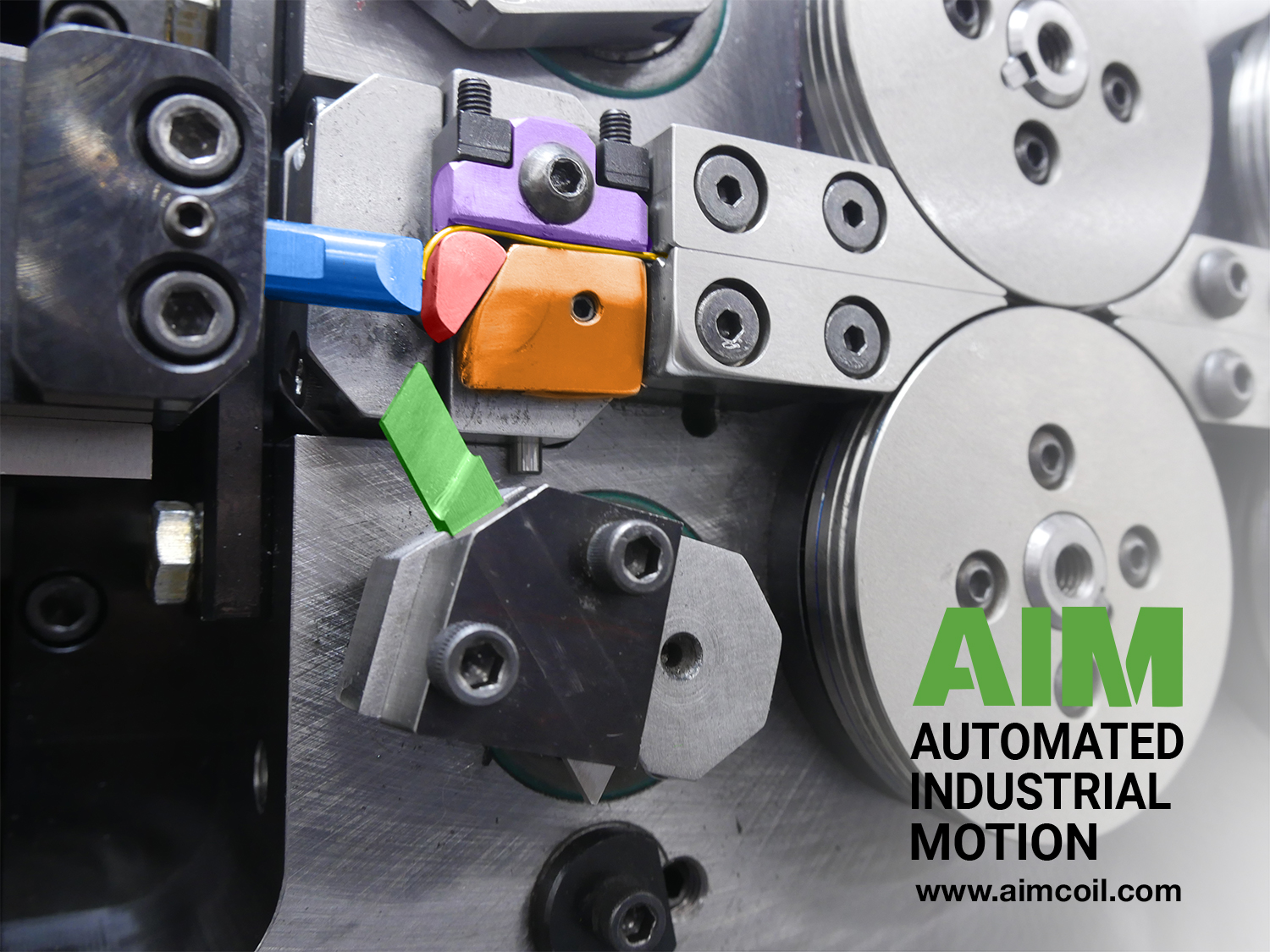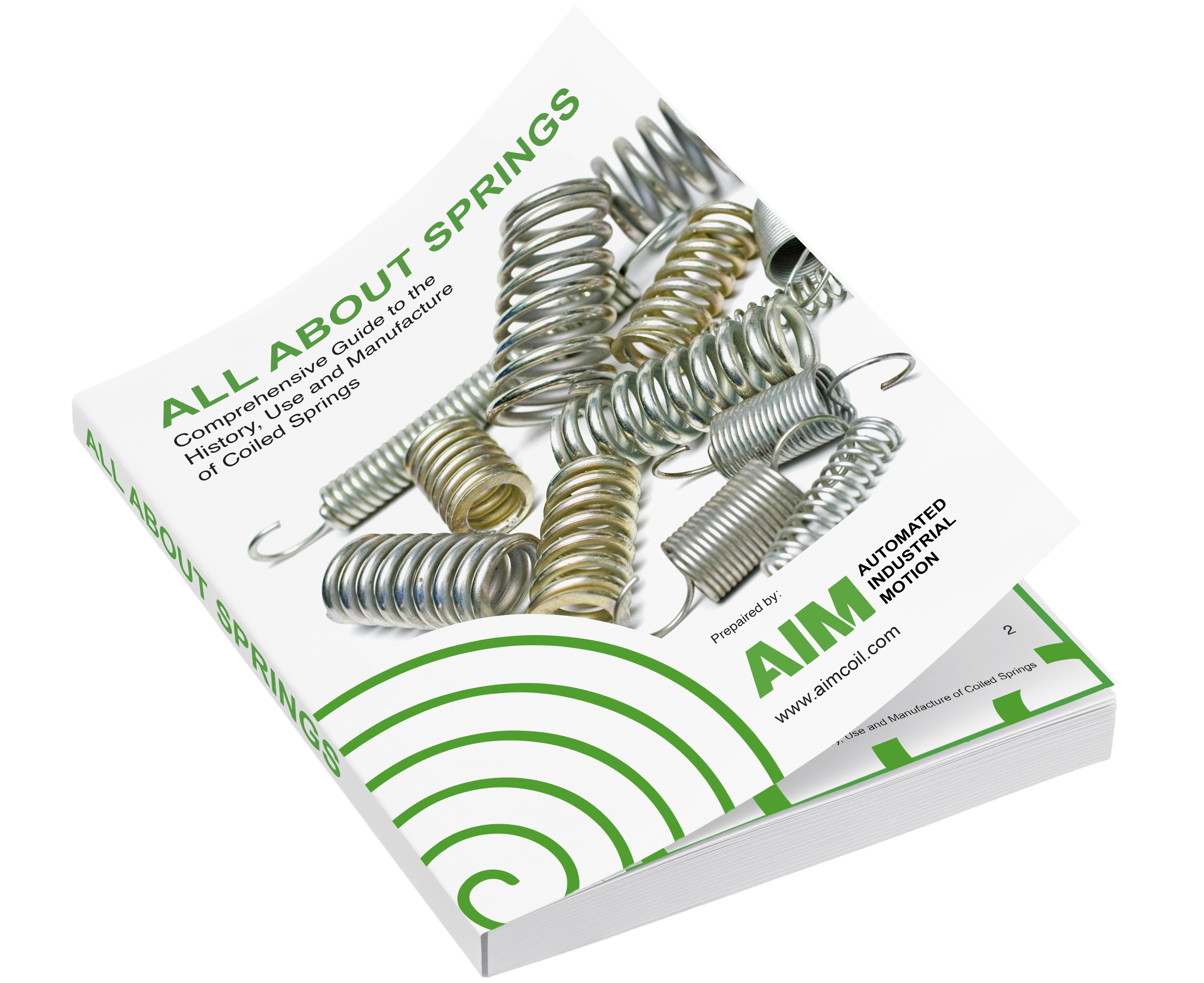Comparing Dual and Single Point Spring Coilers
Modern CNC spring coiling machines can be divided into single-point or dual-point coilers. Dual-point coilers have two coiling points that make contact with the wire to coil it into the correct shape. Single-point spring coilers function with the same principles, but utilize only one coiling point.
In order to coil wire, all coilers must make contact with the wire in at least three areas. Since they have only one coiling point, single-point coilers require an arbor for coiling. Dual-point coilers only require an arbor for cutoff.
Dual-point spring coiling technology was developed in Europe, while single-point spring coiling technology was developed in North America. With the right setup, quality coiling machines of either type can produce springs with a variety of wire diameters, coil diameters, initial tensions and spring indexes. Beyond that, both single-point and dual-point coilers have different sets of strengths and weaknesses. The best choice for your spring manufacturing operation depends on the types, variety and requirements of the springs you plan to produce.
Advantages of single-point spring coilers
Single-point spring coilers are more versatile in the types of springs they can produce. Extension springs, for example, require higher amounts of initial tension than can usually be achieved with dual-point technology. Straight-leg torsion springs and magazine springs can also be produced on standard single-point coilers, whereas dual-point coilers would require modifications.
Because of the comparative simplicity of the coiling point setup, single-point coilers are more conducive to cassette tooling. Cassette tooling allows operators to easily and quickly change coiler setups by switching out the individual tools (chuck, arbor, coiling point, etc.).
For the same reason that single-point coilers work better with cassette tooling, they can be easier for inexperienced operators to learn. With fewer variables in the setup process, new-employee training time can be reduced overall.
Advantages of dual-point spring coilers
Dual-point spring coilers are well suited to producing straight compression springs. By adding another point of contact, the system can reduce coiling friction. This can result in smoother inner surfaces of coils that may lead to longer-lasting compression springs in extremely high usage scenarios.
While slightly more complex, dual-point spring coilers can also be adjusted with more precision. The second coiling point adds four dimensions of mobility that can affect coil diameter and pitch. The added point of contact can also reduce wear and tear on other tooling in the system.
Furthermore, the need for a precisely formed arbor is eliminated by adding the second coiling point to the spring coiling system. In single-point coilers, the arbor is an important tool that must be carefully matched to each job.
Similarities between single and dual-point spring coilers
Despite their differences, single and dual point coilers are both theoretically capable of producing compression springs of the same quality. During the coiling process, the same stresses occur in the material in both coiler types. After springs are coiled, the same residual stresses remain, regardless of coiler type. According to SMI technical consultant Dan Sebastian (pp 20-21), “There is no difference between a single or dual point coiler when it comes to life expectancy of the spring…In the end, there is no substitute for the art and the skill of the setup person.”
Why AIM chooses to offer single-point spring coiling machines
All standard CNC spring coiling and wire forming equipment produced by Automated Industrial Motion (AIM) is of the single-point type. We choose to focus on this configuration for several reasons:
- Single-point coilers are more versatile, allowing a single machine to produce compression, extension, torsion and magazine springs. For job shops and OEM manufacturers producing more than one type of spring, single-point technology is the preferred choice.
- Single-point coilers more conducive to a cassette tooling approach for quick, repeatable changeovers.
- With the advent of CNC technology, training times for all types of manufacturing have been drastically reduced. By using simpler, easier to configure coiling systems, we prevent our equipment from becoming a training bottleneck for our customers.






